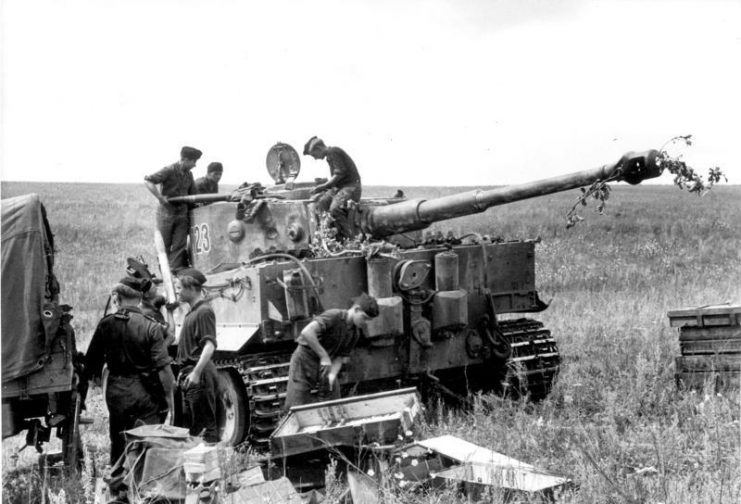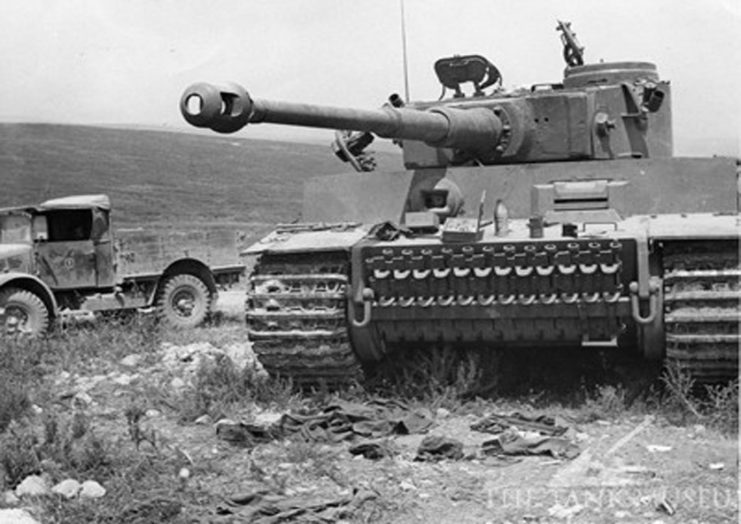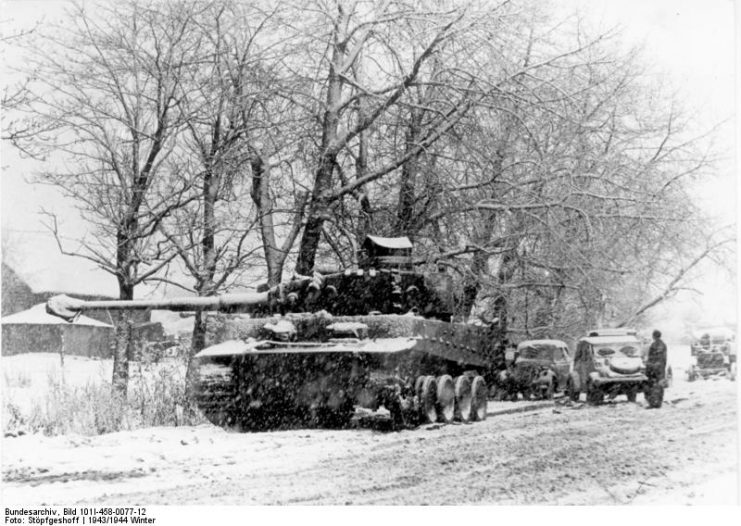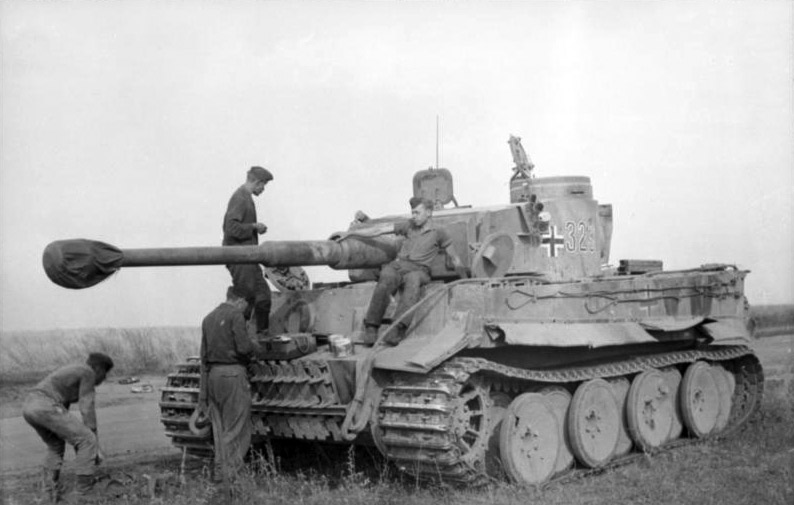The Tiger Tank was without a doubt the tank which was most feared by the Allied forces during the Second World War. The thing that made this tank so feared and respected was the 88mm gun, which could destroy a Sherman tank at ranges up to 3600 yards – far beyond the range of the guns mounted on the Allied tanks. An Allied tank had to be well inside the Tiger’s range before it had any chance of destroying it.
The Tiger was a formidable tank. It saw action in Russia, Tunisia, Sicily, Italy and north-west Europe (although production was limited to just 1,354 tanks) and it was feared by all Allied tank crews, which gave the Panzer forces a considerable psychological advantage. Even so, it would probably be fair to say that more Tigers were lost to mechanical failure than to combat.
Designer Ferdinand Porsche called the tank ‘Tiger.’ This was a lot shorter than the official German designation: Panzerkampfwagen VI Ausführung H, changing to Panzerkampfwagen VI Ausführung E later in the war.

The Tiger Tanks were first deployed in 1942 when they were used in North Africa against the American and British forces. Subsequently, they saw action on all fronts until the very days of the war.
After their first encounters on the battlefield, Allied tank crews reported virtually every tank they encountered as a Tiger Tank, which was unlikely because the Germans only managed to build 1,347 before production stopped in August 1944. This illustrates the fear that these machines instilled in the Allied soldiers.
The Tiger Tanks were well ahead of any tanks the Allied forces had in their inventory, but they were not without flaws. The tanks were over-engineered, used expensive materials and were very labour-intensive to build. When it broke down, it was difficult and expensive to fix.
Some of the tracks used were prone to break, and its high fuel consumption made it a strain on the already bad fuel situation for Nazi Germany.
After the war had ended, the remaining Tigers Tanks were scrapped and today, very few remain. Only a handful can be seen in museums and even fewer survive outside as monuments.

At this time there is only one Tiger left in running order; The Bovington Tank Museum in the United Kingdom has Tiger 131 which is the star of many tank shows and has been used in the 2015 movie “Fury.”
The Tank Museum‘s Tiger 131 was in service with 3 Platoon (Troop), 1 Kompanie, Schwere Panzer Abteilung 504, German Army, it was captured by 48 RTR, A Squadron, 4 Troop, at Djebel Djaffa, Tunisia, on 21st April 1943.
This tank was the first Tiger to be captured intact by British or U.S. forces when it was knocked out in the final month of the Tunisian campaign. It arrived in Tunisia sometime between 22nd March and 16th April 1943 and was involved in an action with 48 RTR near Medjez-el-Bab on 21 April 1943. It knocked out two Churchills but a shot from another’s six-pounder stuck the gun mantlet, and although unable to penetrate the tank’s thick armour, jammed the turret and wounded the commander.

Damage is still visible on the mantlet, superstructure front plate and turret lifting boss. The crew abandoned the tank, and it was recovered the next day and refurbished using parts from other vehicles. The Tiger was later displayed in Tunis and inspected there by King George VI and Winston Churchill.
In October 1943 it was sent to the School of Tank Technology for evaluation and in November 1944 displayed on Horse Guards Parade.
The tiger tank has a hand crank for starting in cold weather.
The inertia starter ” Schwungmasse ” works by rotating a heavy mass at speed, once it reaches 60rpm a lever is pulled below the hand cranking arm, this pushes the drive pinion onto the flywheel, making the engine rotate and start.
https://youtu.be/SYMYdVt_CTE
